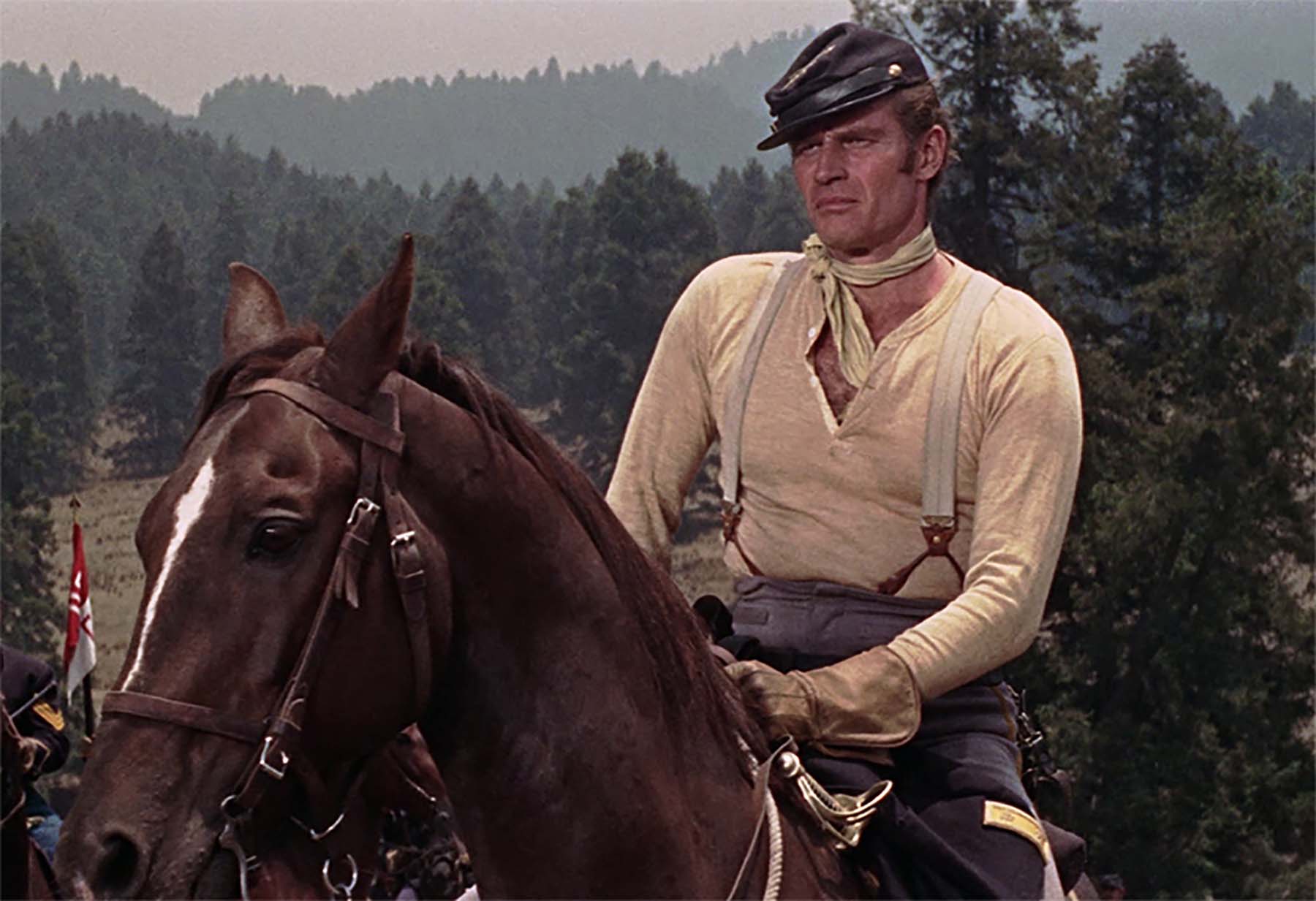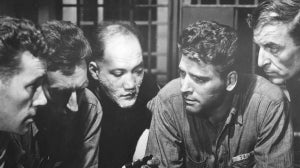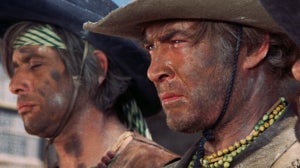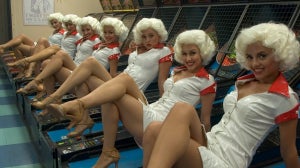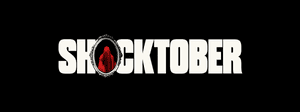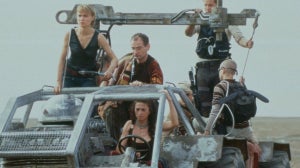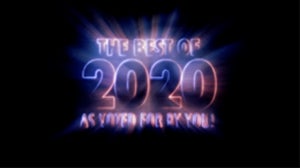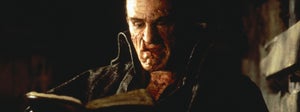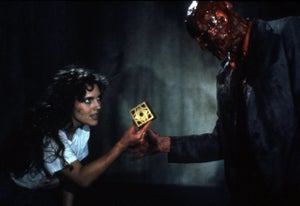
It is now almost forty years since Sam Peckinpah's death, and still no one seems quite sure what to make of him. To some he was a force of nature, a maverick auteur touched by genius. To others, a tyrannical drunken maniac. There is certainly truth to both sides; suffice to say Peckinpah was a complex, troubled man who made complex, troubling films. Films that are still being talked about, in many cases argued about, several decades later. There are canonical masterpieces (Ride the High Country, The Wild Bunch), and unnerving, boundary-defying works deemed masterworks by supporters and exploitative trash by their critics (Straw Dogs, Bring Me the Head of Alfredo Garcia). Some demonstrate a more poetic side to the director (The Ballad of Cable Hogue, Junior Bonner), while others are every bit as brutal and nihilistic as Peckinpah's legend would suggest (The Getaway, Cross of Iron).
And then there are the rediscoveries, films that were left hobbled and maimed at the time of their release but have since been restored to something resembling the director's original intentions. Most famously Peckinpah's late masterpiece Pat Garrett and Billy the Kid, but also Major Dundee, his first attempt at a revisionist epic western. The saga of Dundee's making is exhaustively documented on Arrow's boxset of the film so we thought we'd take a look back at some of the production battles that erupted on other Peckinpah movies.
For a director so identified with the genre, it's interesting to note just how many of Peckinpah's westerns were difficult, fractious productions, the results never entirely mirroring his intended vision. Even his unquestioned masterpieces Ride the High Country and The Wild Bunch were both affected by studio recalcitrance and tampering. And while there were certainly a variety of reasons for the fights Peckinpah experienced – some entirely of his own making – it's fair to say that the director's violently unsparing take on the American West often frightened and bewildered the studio suits bankrolling his films.
The tone was set with Peckinpah's very first feature assignment, The Deadly Companions. Unhappy with the quality of the screenplay he'd been offered, the director set about rewriting it. However, the film's producer promptly told Peckinpah that he had not been hired to rewrite, only direct. It subsequently became clear he wasn't trusted to do that either; not only did he suffer from interference throughout the shoot, he was then fired during post-production and the film recut without him. As Peckinpah later commented, “I found out about producers, all right.”
Still, the glimmers of his talent that survived soon caught another producer's eye, who offered Peckinpah a second shot at directing. The result was Ride the High Country, Peckinpah's first elegy for the Old West. In his hands, what could have been a fairly rote horse opera was transformed into a wistful, melancholy lament. And despite some production clashes with the film's financier MGM, the director was allowed to finish shooting it his way. Even MGM's production chief Sol Siegel, initially dubious about Peckinpah's unconventional directorial methods, eventually came around when he watched a rough cut of the film.
Unfortunately, within weeks Siegel was gone from the studio, a victim of internal politics. In the wake of his dismissal, MGM's president ordered that Ride the High Country be screened for him, and promptly slept through most of it. Afterwards, he called it “the worst film that's ever been perpetrated on the American public”. Peckinpah was then barred from the MGM lot.
Undeterred, the director continued to secretly consult with the film's editor until its completion. However, he had no input on the scoring process, and as a result Ride the High Country suffered from the sort of oppressive overscoring typical of more conventional Hollywood films. Still, Peckinpah was mostly happy, later commenting that “A good picture is usually seventy percent of your intentions. Ride the High Country was eighty percent for me.”
Regardless, his personal satisfaction had no bearing on the opinions of the studio brass. The movie was dumped, released as the second part of a double bill. Nevertheless, this time out there would be a happier ending: the film was greeted by a chorus of positive reviews, and went on to place on several best of the year lists.
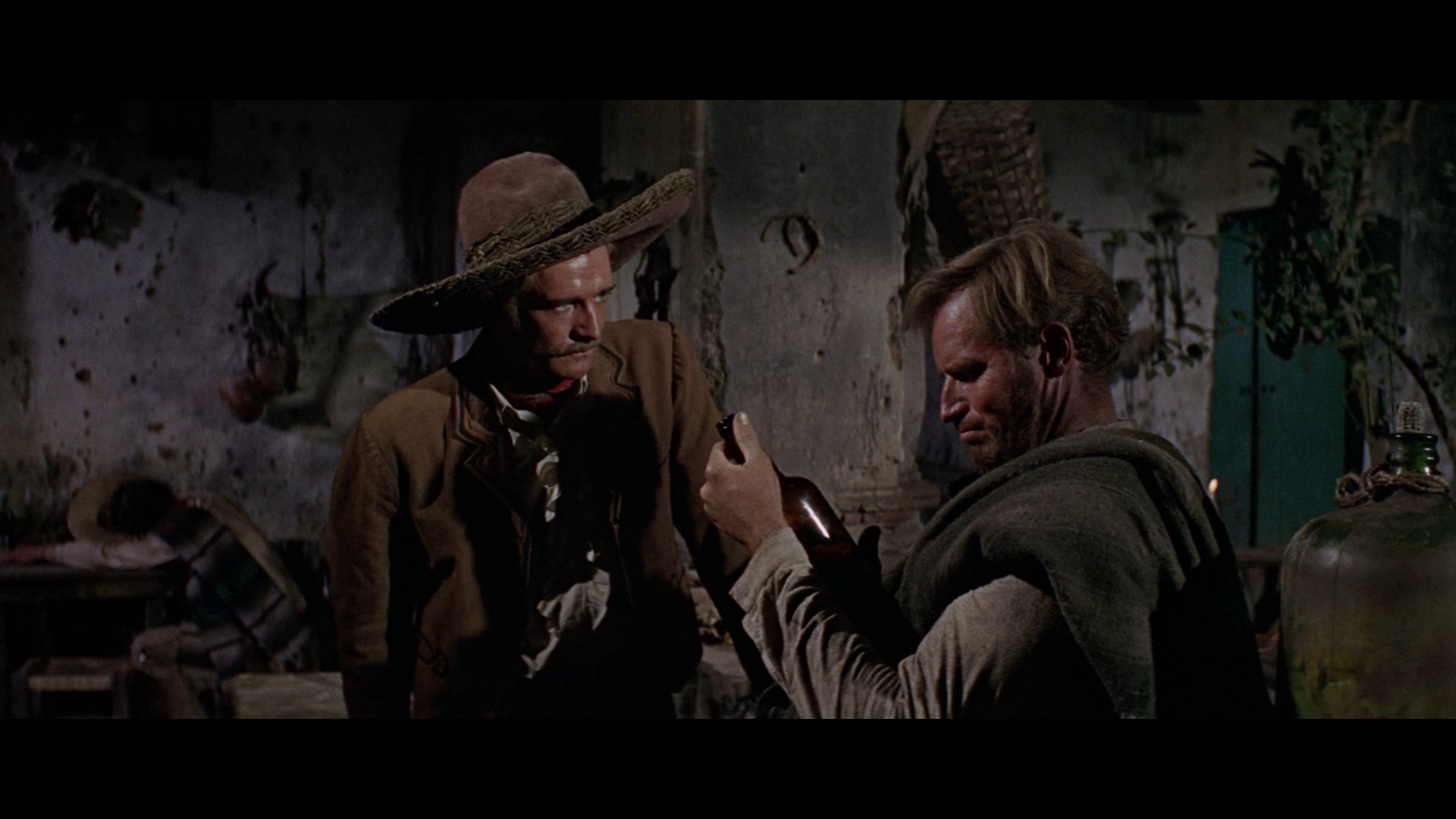
But then, things started to fall apart again. Suddenly a hot property, Peckinpah was signed to direct Major Dundee, a epic western he envisioned as “Moby Dick on horseback”. But this was filmmaking on a much bigger scale than Ride the High Country, and the director's original intentions were quickly undone by last-minute budget disputes, an unfinished screenplay, and a host of production difficulties. More vicious post-production battles followed: Peckinpah's (already-compromised) version of the film would be taken away from him without so much as a preview screening, and another twenty-seven minutes hacked out of it by the studio. This time, not even the press would save him. The same critics that had named Ride the High Country one of the best films of its year declared Major Dundee a disaster.
And it wasn't over yet. Smartly, Peckinpah had lined up another assignment while the Dundee fiasco was still unfolding: The Cincinnati Kid, a Steve McQueen vehicle intended to cash in on the success of The Hustler. But to his cost, he once more found himself partnered with an unsympathetic producer, Martin Ransohoff. Expecting a “popsicle” of a movie, Ransohoff viewed the first week's rushes, and was appalled at their bleak tone. He immediately fired his director, and planted lies in the trade press that Peckinpah had been dismissed for reasons of “moral turpitude”, claiming that he had shot a nude scene not called for by the script.
Now blackballed from the industry, Peckinpah would not direct another feature for four years. It was not until Kenneth Hyman, Warner Brothers's head of production and another fan of Ride the High Country, invited him to make The Wild Bunch that he was finally able to claw his way back. By now, a new breed of picture was starting to emerge, and while it's commonly accepted that it took the success of Easy Rider in 1969 to truly usher in the Hollywood New Wave, Peckinpah's brutal masterpiece was in fact released a month before it, and looked at today, is the far more enduring, incendiary film.
Still, nothing ever came easy to Peckinpah, and even the film that turned out to be his crowning achievement would suffer its own share of mishaps. Shooting on The Wild Bunch went nine and a half days over schedule; post-production dragged on for a full year. Nevertheless, Hyman and the other studio executives loved what they were seeing. Even when the extreme violence in the movie caused numerous walk-outs at a preview screening, no one panicked. Despite subsequently having to make cuts to the gore and language, Peckinpah remained sanguine, pronouncing himself “ninety-six percent” satisfied with his new film.
However, the Warner Brothers distribution executives were less supportive than Hyman. Instead of the prestige release Peckinpah had hoped for, the film was treated as merely another mass-market western, and released into hundreds of theatres without much in the way of fanfare. But The Wild Bunch was hardly just another western, and while it was met with raves and sell-out audiences in many of the main urban markets, it did mediocre business in conservative middle America. Exhibitors began to complain that the film was too long; if it were cut, they could fit in another show per day and make some more money.
Worse still, Kenneth Hyman was suddenly replaced at the studio. Without him there to defend it, an executive decision was taken to cut The Wild Bunch by ten minutes. Unsurprisingly, Peckinpah was not consulted on the edits. The director's response to yet another film being snatched from him? “There are people all over the place, dozens of them, I'd like to kill, quite literally kill.”
Thankfully, Peckinpah's full vision was eventually restored. The film never suffered any further cuts in Europe, and it is that version which has now been preserved for posterity. And despite its troubled release, The Wild Bunch made a major impact in the industry, allowing the director to re-establish himself just in time to ride the wave of unconventional, taboo-breaking films that were by then coming out of Hollywood.
This Peckinpah managed to do for about four years. The films he made during that period – The Ballad of Cable Hogue, Straw Dogs, Junior Bonner, The Getaway – were not produced without their share of fights, and some were hits while others were outright flops, but they were all his. But given the director's inherently combative nature, it didn't last.
Never one to pick his battles wisely, there was one particular fight Peckinpah never really won, and that was his ongoing struggle with the bottle. He'd just about managed to maintain the upper hand during the years of his success, despite the lost days, the drunken rages, the broken friendships. But now the war was beginning to take its toll. Not only that, but Peckinpah then embarked on the most ill-chosen fight of his career.
James Aubrey, the head of production at MGM, had already earned the industry nickname of “the Smiling Cobra” when he offered Peckinpah the script of Pat Garrett and Billy the Kid to direct. However, Peckinpah had long yearned to tackle the legend of Billy the Kid. He accepted Aubrey's offer, filled with the misguided conviction that he would be the one to finally put the cobra back in its basket.
Things didn't quite turn out that way. Pat Garrett and Billy the Kid was hurried into production with an inadequate schedule and without a properly-completed script (shades of Major Dundee), suffered from terrible technical mishaps (an unknown camera fault resulted in dozens of shots being out of focus; Aubrey refused to send a technician to the set and so the problem continued for two whole weeks without being fixed), and, most tragically, was helmed by a director who was becoming increasingly overwhelmed by his alcoholic demons. Peckinpah, invariably hungover, would arrive late to the set and then drink throughout the day. As the film's star James Coburn later remarked, “[Peckinpah] was a genius for about four hours, then it was all downhill.”
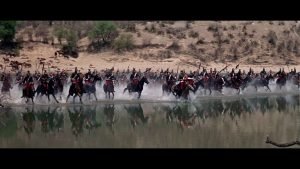
And yet, the director's talent continued to burn brightly enough that the stormy shoot still birthed something remarkable. Despite the script flaws that would never quite be solved, everyone who watched Pat Garrett taking shape knew that they were witnessing something remarkable.
Everyone, that is, except James Aubrey. He insisted that the film be rushed through post-production, and when he finally screened Peckinpah's cut, was aghast at its leisurely pace and mournful tone. The director's contract entitled him to two public previews of his version of the film, but, perhaps realising that he was on the verge of losing this battle, Peckinpah did not attend them, and further courting disaster, then refused to engage with the resulting audience feedback.
Aubrey immediately began to recut Pat Garrett behind his back, wantonly slicing out thirty minutes from the film. When he showed his cut to the film's original editors, they were horrified. The MGM head then offered them the chance to go back and work on it themselves, telling the editors that he would allow them to restore another ten minutes if they agreed.
It's widely accepted now that this was a deliberate attempt by Aubrey to strike at Peckinpah, and it worked. As the director saw it, his once-trusted collaborators were now conspiring against him. His spirit broken, he viciously turned on them, alienating men who'd worked with him for years. Pat Garrett and Billy the Kid was eventually released in a heavily-bowdlerised form, and although the film had its defenders, everyone knew it was a pale shadow of what the director had intended.
Perhaps the phantom Pat Garrett-that-might-have-been was too much for even Peckinpah to contemplate. Because despite Aubrey being fired from the studio soon afterwards, and another MGM executive subsequently extending an invitation to the director to come back and restore the film, he never did.
It was not until 1986, nearly two years after Peckinpah's death, that Pat Garrett and Billy the Kid would be seen in anything like its intended form. During the post-production battles, a print of the preview version had been secretly smuggled off the MGM lot and preserved ever since. Although it by no means represents Peckinpah's finished director's cut of the movie, it is still a fuller, richer film than the Aubrey version, and undoubtedly one of his great works. As Martin Scorsese later commented, “Pat Garrett and Billy the Kid was the only other Peckinpah film that came close to The Wild Bunch. It came very close.”
There would still be other notable films to come from Peckinpah, but after the Pat Garrett experience, bitterness, booze and drugs would steadily take hold of him, and many of his later credits are relatively undistinguished hackwork, made by an embattled director finding it increasingly difficult to hold down a job. A redneck romp like Convoy was hardly worthy of his talents, but desperately needing work, Peckinpah accepted the gig. But when, after long months of editing, the cocaine-blitzed director still had nothing to show the backers but a three-and-a-half hour rough cut, his days were numbered. Sadly, even his last film, the Robert Ludlum spy potboiler The Osterman Weekend, would be taken away from him after yet another ill-fated preview screening.
There is little doubt Peckinpah played a major part in his own downfall. His various instabilities and addictions would have made it impossible for most men to even function, let alone direct multi-million dollar film productions. And yet...had he not been treated so badly by Hollywood, would his distrust of producers have become as pathologically deep-rooted as it did? Might there have been a world where Peckinpah's talent had been more respected, and he wasn't driven further and further into the bottle by disappointment after disappointment?
Or perhaps the director and Hollywood were simply a lethal cocktail, each guaranteed to bring out the worst in each other. We'll never know. All we can ever possibly know is the great films Peckinpah left behind, which grow greater with every passing year. As critic David Thomson once wrote of him: “A very dangerous man, because he could be so damn good.”

